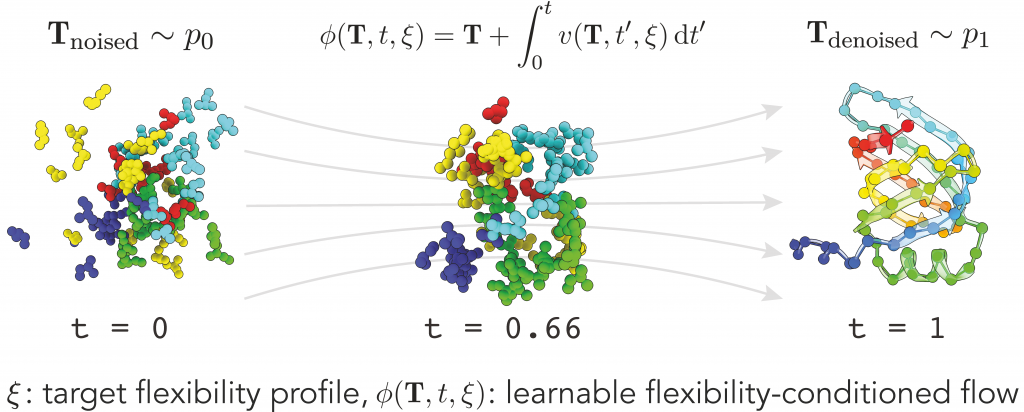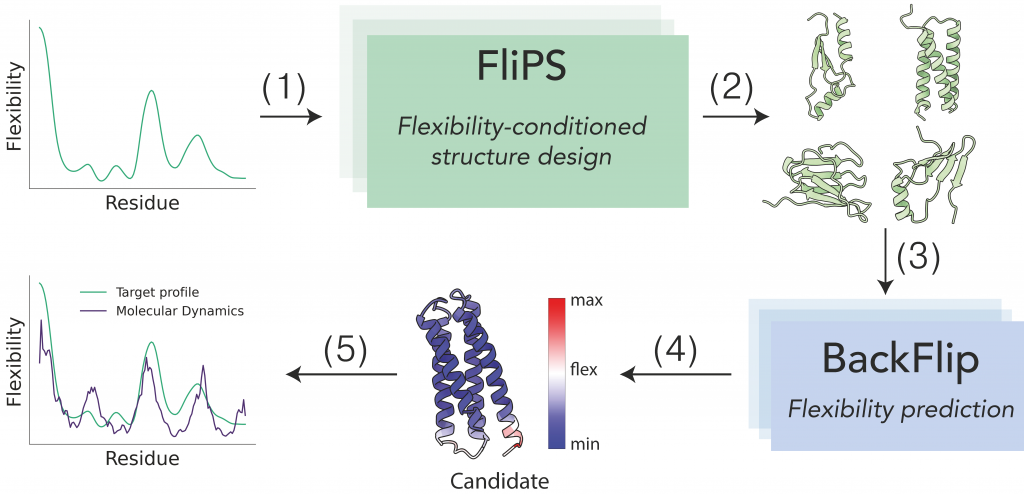Floppy and flexible: How Machine Learning helps to build new proteins
A team of researchers from the Heidelberg Institute for Theoretical Studies (HITS) and the Max Planck Institute for Polymer Research (MPIP) have developed a model that learns how to generate proteins whose structures are highly flexible, even with patterns that are uncommon in natural proteins. Their work, presented at the International Conference on Machine Learning (ICML), marks a step towards the goal of designing new proteins for applications in biotechnology, therapeutics and environmental research.
The natural protein universe is vast, and yet, going beyond and designing new proteins not observed in nature can yield new functions and can solve problems in medicine or materials science. The past few years have marked the golden age of de novo protein design: Machine learning methods have led to an unprecedented level of modeling accuracy. This progress enables researchers to design protein structures with specific functional properties never observed before. This is of particular interest for biotechnological applications, therapeutics development and sustainability problems, such as plastic degradation.
One of the key features of functional proteins – large biomolecules with complex structures – is their inherent structural flexibility: They wiggle, jiggle and change shape. But current designs largely lack this important feature. For a team of researchers from the Heidelberg Institute for Theoretical Studies (HITS) and the Max Planck Institute for Polymer Research (MPIP) this was the starting point to deliberate about whether one could design proteins with a custom flexibility from scratch. They presented the results of their work at the International Conference on Machine Learning (ICML) in Vancouver, Canada.
Matching the Flow: A model for de novo proteins
“We wanted to build a model that learns how to generate proteins such that their structures are flexible to a given extent at a given position”, says first author Vsevolod Viliuga (MPIP). To that end, the team introduced a framework for generating flexible protein structures. This framework is based both on a neural network trained to predict flexibilities of protein backbones and a generative model for protein structure. “Natural proteins are so excellent in fulfilling their tasks because they are flexible wherever needed”, says co-author Leif Seute (HITS). “We now can design novel proteins that mimic this key property.” HITS group leader Jan Stühmer adds: “It is an extension of the Geometric Algebra Flow Matching model, in short: GAFL, that we developed last year.” GAFL is three times faster than comparable models and not only achieves high designability, but also resembles the natural proteins better in various aspects.
In the end, the team showed that the model can generate proteins with the desired flexibility patterns, even for patterns that are uncommon in natural proteins. Frauke Gräter (MPIP), one of the team leaders, resumes: “This work is a step forward to design new proteins for applications where flexibility is required, such as enzyme catalysts.”

Paper:
This study received funding from the Klaus Tschira Stiftung gGmbH (HITS Lab).
Scientific Contact:
Jun.-Prof. Dr. Jan Stühmer
Junior Group Leader
Machine Learning and Artificial Intelligence
Heidelberg Institute for Theoretical Studies (HITS)
https://www.h-its.org/people/dr-jan-stuhmer/
Prof. Dr. Frauke Gräter
Director, head of the department “Biomolecular Mechanics”
Max Planck Institute for Polymer Research (MPIP)
https://www.mpip-mainz.mpg.de/1001480/01_Direktor
Media contact:
Dr. Peter Saueressig
Head of Communications
Heidelberg Institute for Theoretical Studies (HITS)
+49 (0)6221 533 245
peter.saueressig@h-its.org
Teresa Petry
Communication
Max Planck Institute for Polymer Research (MPIP)
+49 (0)6131 379-119
pr@mpip-mainz.mpg.de
About HITS
HITS, the Heidelberg Institute for Theoretical Studies, was established in 2010 by physicist and SAP co-founder Klaus Tschira (1940-2015) and the Klaus Tschira Foundation as a private, non-profit research institute. HITS conducts basic research in the natural, mathematical, and computer sciences. Major research directions include complex simulations across scales, making sense of data, and enabling science via computational research. Application areas range from molecular biology to astrophysics. An essential characteristic of the Institute is interdisciplinarity, implemented in numerous cross-group and cross-disciplinary projects. The base funding of HITS is provided by the Klaus Tschira Foundation.
